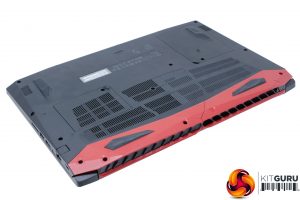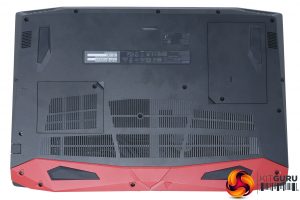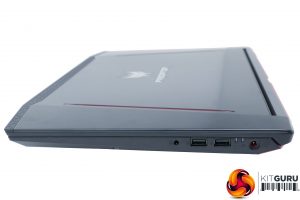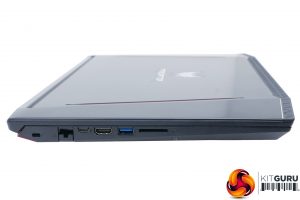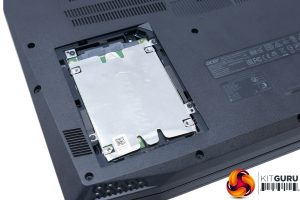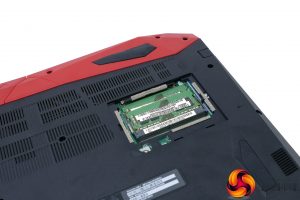The Helios 300 is available in a range of configurations. The main choices are between having a GTX 1060 or GTX 1050 Ti graphics card, opting for a smaller 128GB SSD or larger 256GB model and choosing between various Intel CPUs. There are models with an Intel Core i5-8300HQ, an i7-8750H and even an i7-7700HQ. Prices start at around £900 for versions with the GTX 1050 Ti and top out at £1250 for the model reviewed here.
What you get in this configuration is an 8750H, which is a six-core chip with hyperthreading running at between 2.2GHz and 4.2GHz. It has largely become the standard CPU for higher-end laptops and it’s quite capable of dealing with pretty much anything you throw at it.
Also included is 16GB of 2,677MHz DDR4 RAM, which again is more than ample for most things a laptop like this is likely to deal with.
There's there's GTX 1060 graphics card. By all means, it’s no powerhouse but for a machine of this price it’s to be expected and is still more than capable of delivering framerates that’ll max out the 144Hz screen in eSports games.
One thing that immediately concerns, though, is the choice of SSD. It's a Toshiba THNSNK256GVN8, which despite being an M.2 form factor drive, still uses the SATA interface so doesn't offer the blistering speeds of an NVMe drive. The 1TB Western Digital WD10SPZX hard drive is also rather slow, with it being a basic 5,400rpm model, but that's often sadly to be expected for a secondary storage solution.
Moving from the internals of the machine to exterior features, one advantage of a larger form factor is plenty of connectivity.
Down the left edge there’s a Kensington lock slot and ports for gigabit Ethernet, USB Type-C, HDMI and USB 3.0, along with an SD card reader.
Round the other side there’s the combi headphone/microphone jack and two USB 2.0 ports. It would’ve been nice to get the separate headphone and microphone ports of the MSI GE63 but it’s not a deal breaker.
On this right edge you’ll also find the power input. The power brick it draws from measures 155 x 75 x 30mm and weighs in at 720g, including both the mains and 12V cables.
Another advantage of a larger laptop is getting a full-size keyboard with a numpad (more on which over the page). For those used to typing lots of numbers into a spreadsheet or other such mundane number-crunching tasks, these are a god send.
Flip the laptop over and you’ll find two panels that can be easily removed to reveal the 2.5in hard drive and two memory slots, for easy upgrading. This model comes with 16GB of RAM in two 8GB sticks so it's unlikely most users will feel a need to upgrade this, though the laptop will support up to 32GB if required. Upgrading the 2.5in drive, though, is a much more likely operation as large-capacity, cheap SSDs are easy to come by now.
If you manage to prize off the whole bottom panel – not a particularly easy task but not one that breaks any warranty seals – you should be able to upgrade the M.2 SSD too.
 KitGuru KitGuru.net – Tech News | Hardware News | Hardware Reviews | IOS | Mobile | Gaming | Graphics Cards
KitGuru KitGuru.net – Tech News | Hardware News | Hardware Reviews | IOS | Mobile | Gaming | Graphics Cards


